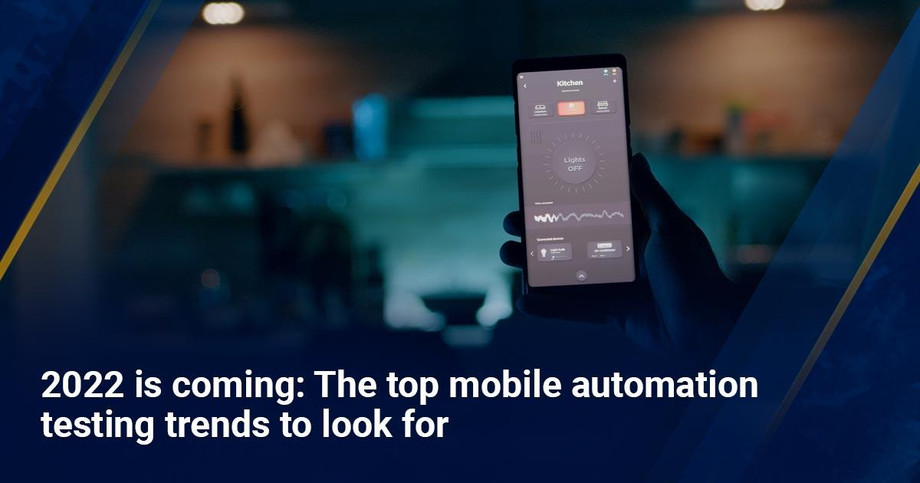As the calendar changes from 2021 to 2022, it is important for the software development teams to delve into what lies ahead in terms of technology, market, and user expectations. With mobile becoming the predominant device for communication and browsing the web, mobile applications have seen unprecedented growth in the last few years. As per projections, the revenue from the mobile app market worldwide is expected to reach $693 billion (Source: Statista). However, the breakneck speed of growth in the number of mobile apps does not quite translate into success. Performance issues plaguing the apps can be cited as one of the primary reasons for customers skipping many apps in the Play Store.
Business enterprises are seized of the matter and have invested a substantial sum of money in implementing mobile automation testing in their value chain. In fact, the market size for testing mobile applications is likely to surpass $40 billion by 2027 (Source: Global Market Insights Inc). The growth in mobile test automation is mainly fueled by the incorporation of AL and ML technologies into the telecom and IT sectors. The blog discusses the top mobile automation testing trends that software development teams ought to know about.
Top mobile automated app testing trends of 2022
The advent of technologies such as AI, ML, and 5G means business enterprises need to look at developing a suitable mobile application testing strategy. This is important due to growing customer expectations for superior user experiences. The die is cast: the better the app’s user experience, the greater the growth in the user base and revenue. Thus, the top mobile automated app testing trends to be expected in 2022 are:
DevOps to adopt signal-driven quality: DevOps will continue its growth momentum in the software development sector. It will continue to help developers and testers meet the demands of increasingly choosy customers and a fast-paced market in terms of speed, quality, efficiency, and risk mitigation, among others. However, to ensure the DevOps methodology continues to evolve and operate at scale, the need to drive a signal-driven quality throughout the SDLC is important. In other words, this would mean QA testers would be viewed more for their risk-mitigation role than as a costly overhead. Businesses can add real value to their brand, product(s), and users by incorporating signal-driven quality into their DevOps workflow.
AI & ML-based mobile app testing: Business enterprises often have to grapple with poor test quality in the SDLC, especially when continuous testing is implemented. This results in bottlenecks with teams waiting to analyze and address false positives or other failures. However, thanks to the advancements in AI and ML technologies, the quality and speed of any mobile application testing framework can be suitably enhanced. Further, AI-enabled bots can mimic human interactions and detect errors in the app’s user interface. For instance, ML-enabled agents can simulate play in testing mobile games to analyze the success and/or failure of the test run.
Qualitative feedback: It is often the case in a traditional mobile application testing approach that user feedback is not always included. This makes it difficult to get a holistic view of the app’s quality as QA goes about addressing issues related to programming errors. This is starker in the case of mobile game testing, where QA addresses issues related to gameplay, design, animation, and movement. In the coming year, more and more mobile app testers are expected to include user feedback in the mobile application testing methodology. This is likely to significantly improve the quality of testing and deliver more engaging user experiences.
Domination of cloud-based testing: The cloud has become the go-to technology or platform for business enterprises to keep their operations up and running, especially during the pandemic. The same goes for testing as well, with business enterprises looking at cloud-based testing to achieve efficiency, better coverage across platforms and devices, and cost-effectiveness. Cloud-based testing helps businesses save money by obviating the need to maintain on-premise hardware and software, besides being easy to scale, implement, and maintain.
Scriptless and/or low-code test automation: Scriptless and/or low-code automated testing allows testers without any programming knowledge to design and execute their automated test suites. The dev team can get valuable insights on issues related to user experience by allowing testers with knowledge of customers but not necessarily of coding. This mobile automation testing approach can help stakeholders scale business operations.
Conclusion
With the pandemic not quite showing signs of abatement, mobile app developers are looking at adopting new trends to deliver the best user experiences. They need to think differently and adopt better methods to meet the growing customer expectations for superior quality, speed, security, and performance. The above-mentioned trends can help mobile testing services gain a competitive advantage.
Resource
James Daniel is a software Tech enthusiastic & works at Cigniti Technologies. I'm having a great understanding of today's software testing quality that yields strong results and always happy to create valuable content & share thoughts.
Article Source: medium.com

